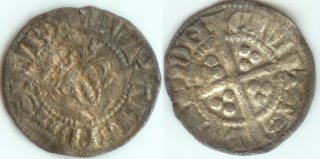Edward I (20 Nov 1272 - 7 Jul 1307) Coinage And History

I thought it might be good to move back in time, to Edward The First. This was another time in Englands history that events happend that were to steer the course of Englands future.
With the formation of a more formal Parliment and codec of laws and taxation, it was also the time that The title of Prince of Wales was created.
Edward I (20 Nov 1272 - 7 Jul 1307) - born 17th June 1239 - two marriages with seventeen offspring
Edward proved a competent general and powerful leader in stark contrast to his father. His legal reforms and development of Parliament possibly at the expense of feudalism earned him the title ‘lawgiver’. He sought to unite Britain and started off by successfully invading and garrisoning Wales. He promised the Welsh nobility a domestic overlord, and later surprised them by re-creating the title and investing his son, Edward, as the Prince of Wales at Caernarfon Castle. His fruitless invasion of Scotland (thwarted by William Wallace and Robert I) merely incited a bitter enmity from the Scots that would develop for many years to come. Much to the relief of the Scots under Robert Bruce, Edward died aged 68 whilst preparing to re-invade them.
The long cross coinage continued into this reign and was now again quite crude, it was abandoned in 1279 and a new coinage substituted. The new coinage consisted of the Groat (or Fourpence) for the first time. Athough this proved not yet popular enough to last, over thirty dies were used to make this new denomination. Being of such a large diameter they proved quite popular as jewellery and are only genuinely rare these days if never mounted.










